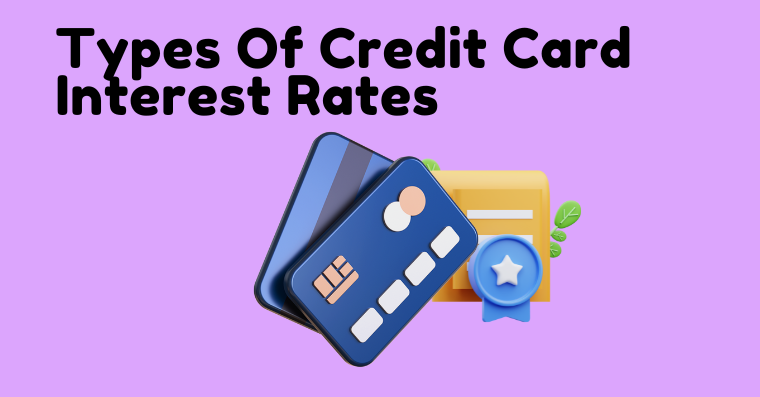Types Of Credit Card Interest Rates
Credit cards are one of the most common financial tools that people use to make purchases, pay bills, and manage their finances. When using a credit card, there are several factors to consider, one of which is the interest rate. The interest rate on a credit card determines how much you will have to pay in interest if you carry a balance on the card. There are several different types of credit card interest rates that you should be aware of, each with its own advantages and disadvantages. In this response, we will provide an overview of the different types of credit card interest rates and their features. Understanding the differences between these interest rates can help you make an informed decision when choosing a credit card that best suits your financial needs.

Types Of Credit Card Interest Rates:
There are three main types of credit card interest rates: fixed, variable, and introductory. Each of these has its own unique features and can impact the cost of borrowing on a credit card.
Fixed Interest Rates:
A fixed interest rate is a set rate that remains the same over time. This means that if you carry a balance on your credit card, you will be charged the same interest rate every month until the balance is paid off. One of the advantages of a fixed interest rate is that it provides predictability and stability in your monthly payments. However, the downside is that if market interest rates decrease, you may be paying more interest than you need to.
Variable Interest Rates:
A variable interest rate is a rate that can change over time based on market conditions. The rate is typically tied to an index, such as the prime rate, which is the rate that banks charge their most creditworthy customers. If the prime rate goes up or down, your credit card's interest rate will also go up or down accordingly. Variable interest rates can provide flexibility and can sometimes be lower than fixed rates, but they can also be less predictable and can change without warning.
Introductory Interest Rates:
Introductory interest rates are typically offered by credit card issuers when you first open a new account. These rates are usually lower than fixed or variable rates and are designed to incentivize you to sign up for the card. Introductory rates can be fixed or variable and usually last for a limited time, such as six months or a year. After the introductory period ends, the interest rate on the card will switch to a regular fixed or variable rate, which may be higher than the introductory rate. It's important to read the terms and conditions of the card carefully to understand when the introductory rate ends and what the regular rate will be.
Bottom line:
In summary, there are three main types of credit card interest rates: fixed, variable, and introductory. Fixed interest rates remain the same over time, while variable interest rates fluctuate based on market conditions. Introductory interest rates are typically lower than fixed or variable rates and are offered for a limited time when you first open a new credit card account. It's important to compare credit card interest rates and read the terms and conditions carefully to ensure you understand the rate structure and any potential fees or penalties associated with the card. By choosing a credit card with a favorable interest rate and understanding how it works, you can make smart financial decisions and minimize the cost of borrowing on your credit card.
Read More: What Are Rewards Credit Cards? And How Do They Work?
.png)


Comments
Post a Comment